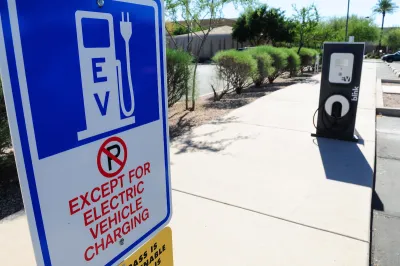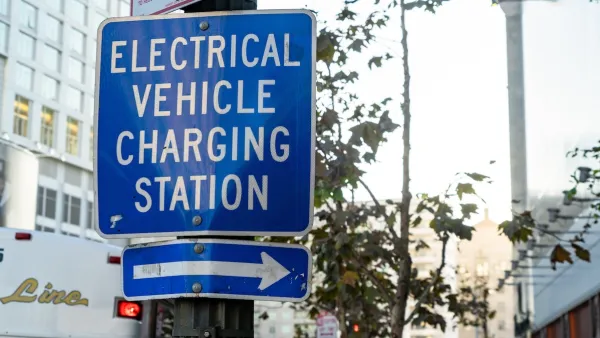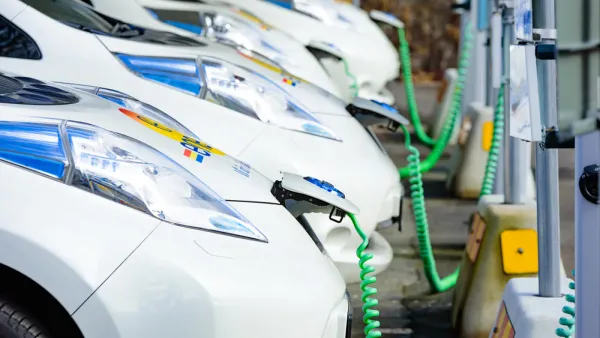A lack of access to charging infrastructure is holding back EV adoption in many US cities.

Writing in PC Mag, Emily Dreibelbis, highlights a paradox: while many electric vehicles are designed for urban environments, “Early adopters are primarily wealthy, single-family homeowners who can power up on private chargers versus those in rental property garages.”
Dreibelbis points out that by 2030, 60 percent of EVs will be in suburbs and “92% of chargers nationwide will be in single-family homes, according to a June 2023 DOE report.” The latter statistic reveals a major reason why urban Americans are less likely to buy electric cars: a lack of charging infrastructure.
[F]or now, EVs are stuck in the suburbs thanks to public charging limitations and a car culture where bigger means better.
The lack of accessible EV chargers in urban areas means urban dwellers can’t benefit from their advantages in the very places they would be most efficient. “When it comes to charging in urban areas, Europe has a few tricks the US hasn't embraced yet, such as converting existing light poles to charging stations. They're BYOC (bring your own cord); drivers pull up and plug in with their own equipment.”
Until urban infrastructure catches up, the suburbs will play a key role in EV adoption, Dreibelbis writes. “They prove that when charging is easy and available, and the driver considers the vehicle affordable, people love EVs.”
FULL STORY: Why Electric Cars Are Built for Cities, But Only Booming in the Suburbs

National Parks Layoffs Will Cause Communities to Lose Billions
Thousands of essential park workers were laid off this week, just before the busy spring break season.

Retro-silient?: America’s First “Eco-burb,” The Woodlands Turns 50
A master-planned community north of Houston offers lessons on green infrastructure and resilient design, but falls short of its founder’s lofty affordability and walkability goals.

Delivering for America Plan Will Downgrade Mail Service in at Least 49.5 Percent of Zip Codes
Republican and Democrat lawmakers criticize the plan for its disproportionate negative impact on rural communities.

Test News Post 1
This is a summary

Test News Headline 46
Test for the image on the front page.

Balancing Bombs and Butterflies: How the National Guard Protects a Rare Species
The National Guard at Fort Indiantown Gap uses GIS technology and land management strategies to balance military training with conservation efforts, ensuring the survival of the rare eastern regal fritillary butterfly.
Urban Design for Planners 1: Software Tools
This six-course series explores essential urban design concepts using open source software and equips planners with the tools they need to participate fully in the urban design process.
Planning for Universal Design
Learn the tools for implementing Universal Design in planning regulations.
EMC Planning Group, Inc.
Planetizen
Planetizen
Mpact (formerly Rail~Volution)
Great Falls Development Authority, Inc.
HUDs Office of Policy Development and Research
NYU Wagner Graduate School of Public Service





























